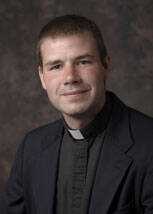Dorothy Day reported in December 1932 that peace disappeared quickly when marchers arrived in Wilmington, Del. Church windows shattered and tear gas intruded on the mass meeting. When people scattered outside, the police beat them. Closer to Washington, D.C., participants in the Communist-organized Hunger March—though nonviolent—were held on a stretch of roadway as prisoners.
Dorothy wrote in her autobiography, The Long Loneliness, “I stood on the curb and watched them, joy and pride in the courage of this band of men and women mounting in my heart, and with it a bitterness too that since I was now a Catholic, with fundamental philosophical differences, I could not be out there with them.”
Instead, Dorothy reported for Commonweal and America, both of which sent her on assignment about the Hunger March and Farmers’ Convention. Later that month her article in America “Hunger Marchers in Washington” described the poignant dramatization of the workers’ plight.
What proved most historically significant in connection with this writing assignment, however, was not the journey to Washington or the workers’ victories, but Dorothy Day’s visit to the national shrine at The Catholic University of America at the conclusion of the Hunger March. The date was Dec. 8, 1932, the feast of the Immaculate Conception.
In the crypt church, she later wrote in The Long Loneliness, “I offered a special prayer, a prayer that came with tears and with anguish, that some way would open up for me to use what talents I possessed for my fellow workers, for the poor.”
Since her conversion to Catholicism three years earlier, Dorothy had been seeking a synthesis of her radical politics, commitment to justice, renewed faith and embrace of Catholicism. When Dorothy returned to New York following her prayer for guidance, she found Peter Maurin waiting for her. Together they founded the Catholic Worker movement. Dorothy would write, “The appearance of Peter Maurin, I felt with deep conviction, was the result of my prayers.”
Dorothy’s relationship with America did not end with that providential assignment. In the subsequent month, Dorothy published two more articles in America: “Confession of Faith” and “Communism and the Intellectuals”; and in April 1933 a third (“The Diabolic Plot,” reprinted in part in America on Aug. 4, 2008). By then the first issue of The Catholic Worker newspaper had been prepared. To pay the $57 printing bill for 2,500 copies, Dorothy used funds from her freelance writing, as well as small donations from friends. On May Day, Catholic Workers distributed the first edition of The Catholic Worker during a Communist rally in Union Square.
Over the next three years, Dorothy continued writing for America, having three more articles published: “Letter to an Agnostic,” “Another Letter to an Agnostic” and “Sharecroppers.” In seven America articles between 1932 and 1936, she engaged readers in friendly, spiritual conversation about the people, events and issues that were most important to her and part of her daily life.
Dorothy wrote about Communists—their “diabolic” aims and their humanity—with refreshing honesty. She strongly resisted Communism’s ambition to destroy religion, and she directly responded to an atheist friend’s critique of religion as morbid and cannibalistic. While her letters were apologetic, they were also personal and inviting. Dorothy shared her faith: “Our beginning and our last end is God”; and she wrote about her young daughter Tamar Teresa’s capacity “to look, and listen, and ponder.”
Living in close contact with many nonbelievers, Dorothy knew that none of them were “untouched by the question of the existence of God.” She blessed their commitment to justice and shared their solidarity with workers and the unemployed, the evicted and hungry, and the nonviolent resisters who worked for social change. “It is when the Communists are good that they are dangerous,” Dorothy wrote in America. “I can write from actual knowledge of the goodness of the people with whom I came in contact.”
It is fitting to commemorate the relationship between Dorothy Day and America, especially this year, when The Catholic Worker marks 75 years and America celebrates its centennial.








